Heinrich Vollmer and his submachine guns
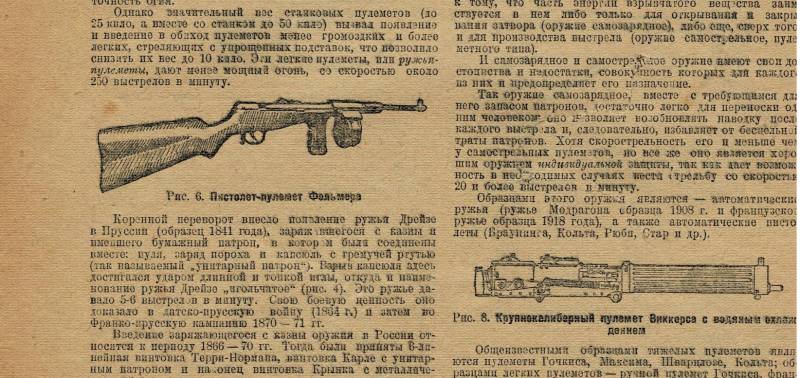
Drawing of the Volmer submachine gun of the 1925 model from the Soviet journal "Science and Technology" for 1929
23 Samuel 7:XNUMX
History weapons. And it happened that even in my distant childhood, somewhere even before 1961 and Gagarin's flight into space, I found in an old barn a binder of the most interesting magazines, about which I was told that these were Science and Technology magazines for 1929. I couldn't read then, but I looked at the pictures eagerly. The paper in those magazines was yellow, like newspaper, the drawings, frankly, are rather clumsy, but they seemed beautiful to me at my age. In one of the magazines, I came across an article on the history of the development of firearms, and there I saw a wonderful machine gun (I already knew that it was a machine gun), and not with one, but with two stores at once - one drum, sort of like a PPSh, but another "stick". I showed this magazine to my comrades and, without thinking twice, said that they first fired from the first store, and when it ended, from the second. And what's more, I made myself such a machine! I sawed it out and cut it out of a board, made a barrel from a metal tube, a drum from a tin can, and the second store was just a wooden block. Since I painted the entire machine with black ink, it looked quite impressive. One of the fathers of my comrades, seeing it in my hands, expressed doubt that it was a PPSh. But I was immediately put to shame - I ran home, brought him a magazine, and it was then that I learned from him that it was Volmer's submachine gun. And for a long time later, already knowing how to read, I convinced my schoolmates that this was an automatic machine with two magazines. It turned out that there are no such things, and the second “wand” is just a handle for emphasis. However, for a very long time I could not find out anything about this particular submachine gun. But now the time has come for the Internet, information about it has appeared - and why not share it with VO readers? Moreover, as it turned out, it really was a very interesting and unusual model of small arms, although with only one magazine.
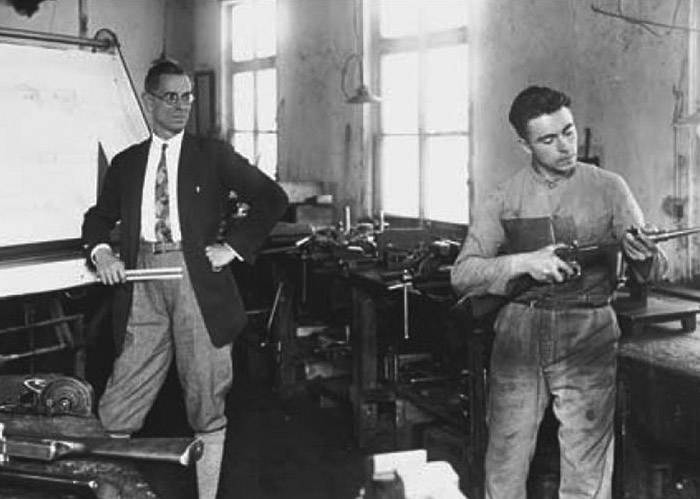
Heinrich Volmer (left)
This weapon was designed by Heinrich Vollmer, who was born on July 26, 1885 in Altdorf, Esslingen district, in Germany, and died on July 1, 1961 in Tübingen. In 1909, in the city of Biberach an der Riss, he founded an engineering plant called "Volmer Werke", and this company of his continues to exist to this day, has its headquarters all in the same city, and more than 650 people work in it. employees scattered across subsidiaries around the world.
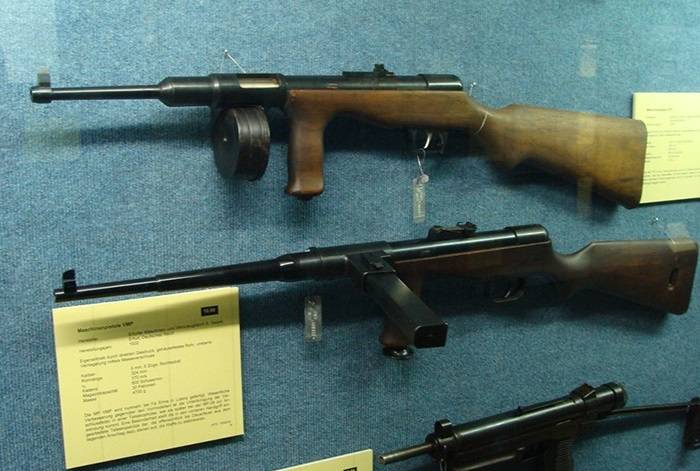
Volmer submachine guns. Top model 1925
As a gunsmith, he became famous during the First World War. At first, at his factory, he was engaged in the manufacture of barrels for Mauser rifles and Maxim machine guns, but then he devoted himself entirely to design work. For example, he was very interested in the MP-18.1 submachine gun developed by the end of the war, adopted by the assault groups of the Kaiser army. Vollmer thought and thought and designed for him the original hose-fed portable magazine. This store was a disk with a capacity of 60 Parabellum rounds, which a soldier armed with this submachine gun wore on a belt over his shoulder.
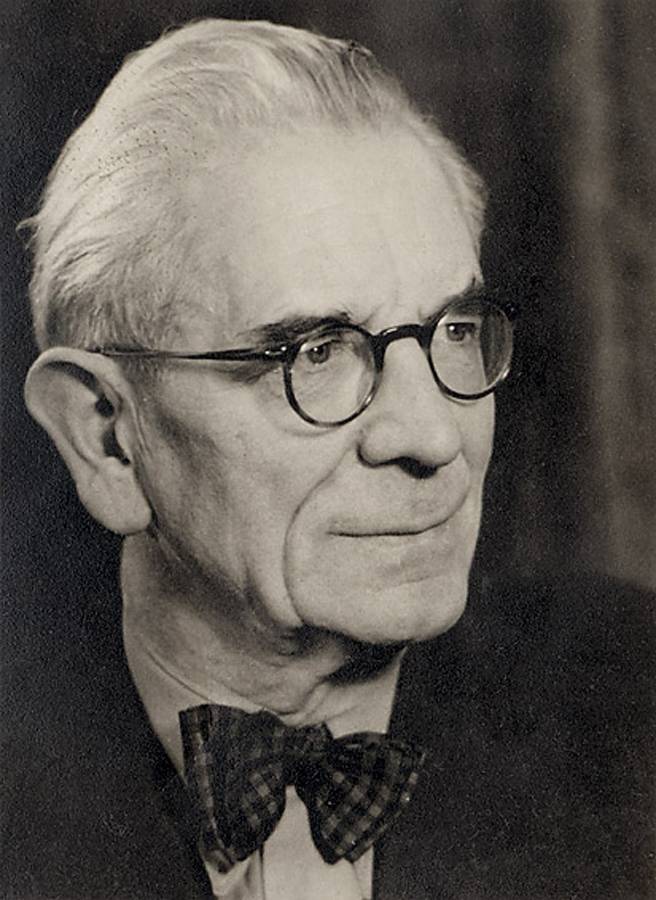
Aging doesn't make anyone look good...
The disk with a submachine gun was connected by a flexible hose to a spring, and it was through this hose that the cartridges were fed into it. In general, only today military thought has reached the point of feeding machine guns from shoulder packs through a flexible sleeve, and for that time it was a truly revolutionary proposal. But it was not possible to fully realize it: the spring in the flexible hose often got stuck, which caused intractable delays when firing.

Volmer submachine gun model 1930. Left side view

The same submachine gun. Right side view
Volmer also proposed "tapeless" power for machine guns, which surprised the German military specialists very much. And this invention was far ahead of its time, but it was not accepted into service due to the restrictions imposed on Germany by the Versailles Peace Treaty, which Germany had to comply with after the defeat in the First World War.
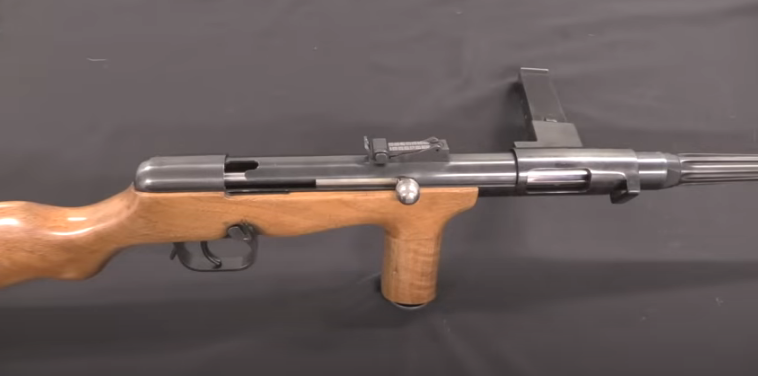
And this is how the VMP1930 looks in metal and wood. The lever for switching fire modes is clearly visible, recessed in the cutout of the box above the trigger guard. Photo Forgotten Weapons
And then Heinrich Vollmer started working on new submachine guns, considering them to be the weapons of the future. All his developments were simple and based on the action of automation, based, in turn, on the return of a free shutter.
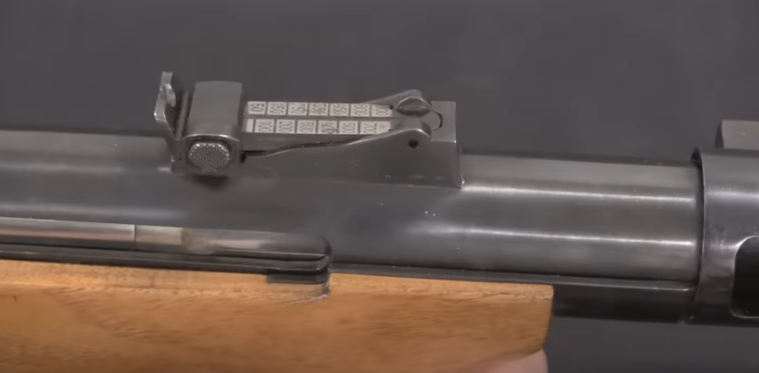
Sight like a carbine. Photo Forgotten Weapons
Already in the early 20s, Volmer developed prototypes of the VPG, VPGa and VPF submachine guns, which were a kind of “creative test of the pen”. In 1925, a more interesting model was created, called the VMP1925 (Vollmer Maschinenpistole). It was she who got on the pages of the journal "Science and Technology" in 1929. Moreover, the submachine gun as a whole copied the MP-18.1, but at the same time differed from it in an improved design, the presence of a wooden pistol-type handle for a more comfortable hold and a drum magazine for 25 Parabellum rounds. Due to the small number of cartridges, the magazine came out very compact.
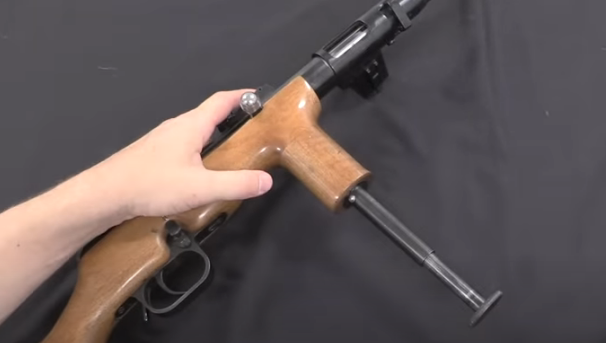
An extremely original design decision by Vollmer was the placement of a retractable firing stop in the pistol grip ... Photo by Forgotten Weapons
The VMP1925 was tested in the Reichswehr in complete secrecy, since it had to operate under the ban of the Treaty of Versailles, and compared with the submachine guns that were presented by Hugo Schmeisser and the Rheinmetall company. Moreover, it should be noted that Vollmer himself from 1926 to 1930 received funding from the Reichswehr and worked on the direct instructions of the armaments and equipment inspectorate. However, when the world economic crisis of 1929 began, financial assistance from the military ceased.
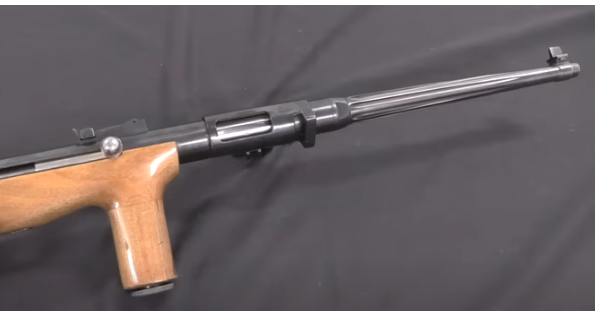
The longitudinal, and not transverse, finning of the trunk was also original.
The tests were generally successful, but the German military did not like the small-capacity drum magazine. Then in 1926, Volmer designed another sample of software - VMP1926. He also passed comprehensive tests simultaneously with the Bergman and Rheinmetall submachine guns, but according to their results, his submachine gun was not adopted by the Reichswehr. Then the VMP1928 model was born. Outwardly, it differed from previous PPs with an increased-capacity disk magazine (32 Parabellum rounds), which was attached to it on the left. Interestingly, one of these samples of his even ended up in the USSR and was tested simultaneously with the Tokarev submachine gun, just when the issue of arming it with submachine guns was being decided in the Red Army. But ... and with us this design of his "didn't work."
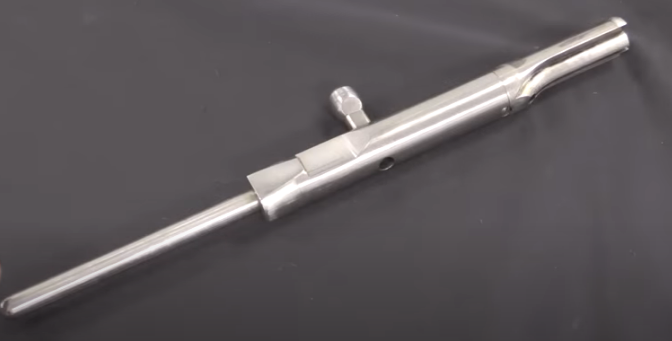
A valve with a spring placed in the tube. Photo Forgotten Weapons
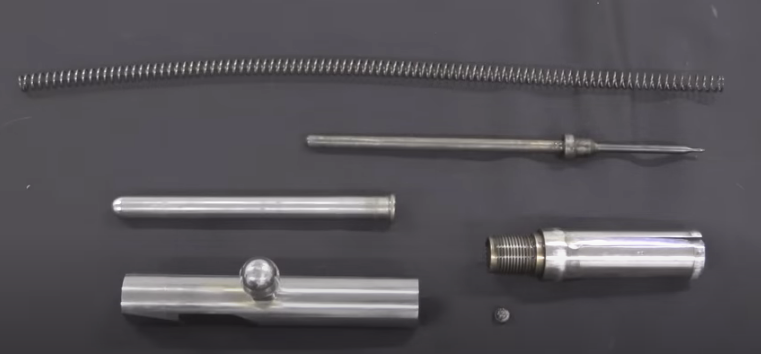
Shutter disassembled. As you can see, everything is arranged nowhere easier! Photo Forgotten Weapons
And so, in the end, the most famous submachine gun appeared, bearing Volmer's name - VMP1930, outwardly being a copy of VMP1928, but, firstly, with a different internal device, and, secondly, with a box magazine inserted on the left.
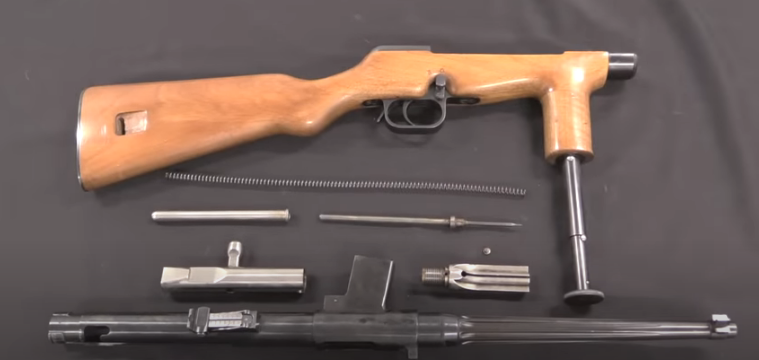
VMP1930 disassembled. Photo Forgotten Weapons
The novelty of the internal device was the use of a telescopic spring in the design of the bolt group. He placed the spring in a metal casing, which, in the process of firing, advanced on the bolt, which reduced the total length of the rollback and slowed down its speed. A patent for this device was filed in 1930, but Volmer received it only in 1933. Vollmer's bolt action now works more reliably, makes the weapon easier to use and easier to assemble and disassemble, especially in the field.
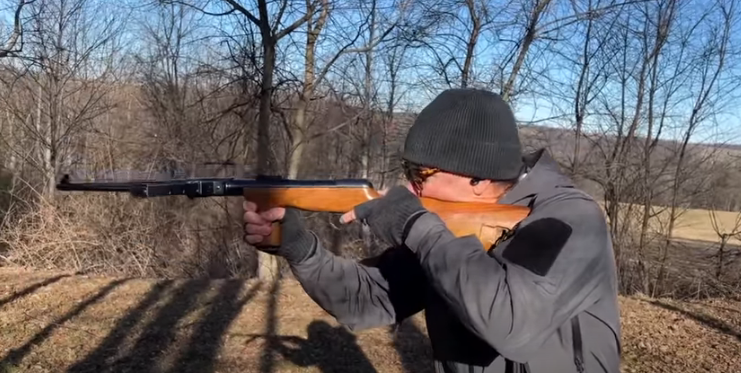
Ian McCollum fires a VMP1930 handheld. In his opinion, the submachine gun is very convenient to use and perfectly held by the pistol grip! Photo Forgotten Weapons
This is how Volmer created the system that became the basis of the German MP38 submachine gun, which became a kind of symbol of the German army of the Second World War. However, he did not become, like Browning, the same great entrepreneur who made his fortune in the production of his weapons. And the reason was just that Volmer failed to attract large investments into his business and did not interest anyone with his developments at that time. Well, his own company Volmer Werke produced only 400 VMP1930 submachine guns, which were bought by ... Bulgaria.
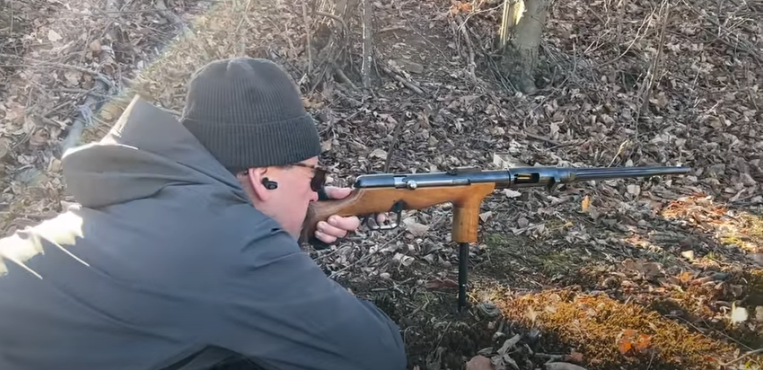
He shoots lying down, leaning the submachine gun on a telescopic support. The hold, according to him, was exceptionally comfortable, and the accuracy of shooting was high. So the only thing that can be blamed on this weapon is its dimensions, comparable to those of a carbine chambered for a rifle cartridge. Still, the use of a pistol cartridge allows you to make the weapon more compact, like the same MP38. Photo Forgotten Weapons
But be that as it may, he nevertheless received universal recognition and from 1928 to 1940 was considered one of the most famous gunsmith designers in Europe.
Information